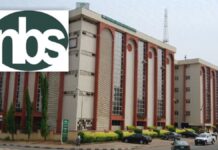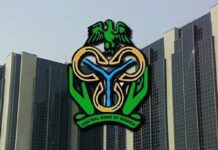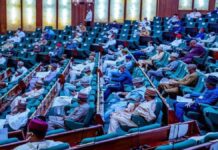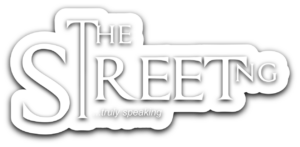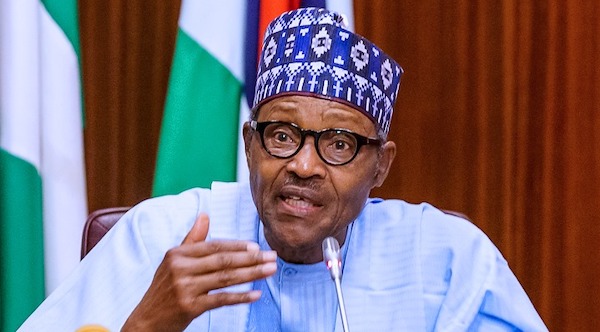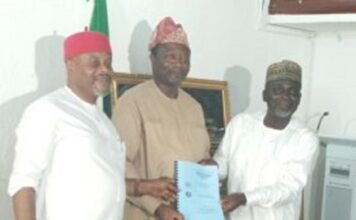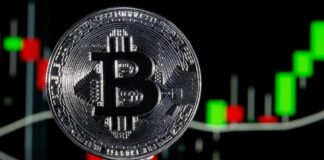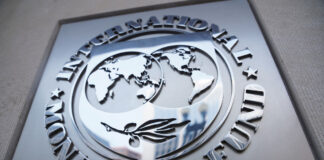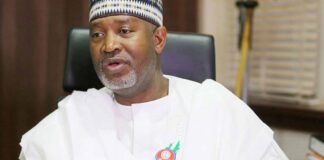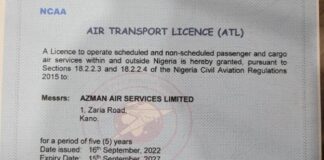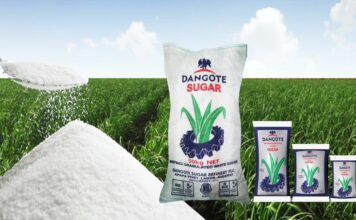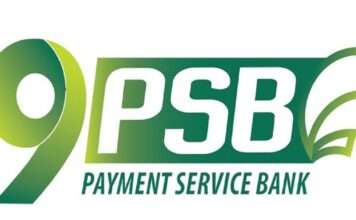FX, Policies Choices Could Delay Nigeria’s Economic Recovery
Multiple issues around Foreign exchange lingered despite the monetary policy authority’s multi-tiered exchange rate management stance.
However, the outbreak of virus which has damaged economic trajectory worsen the case thus far.
The Central Bank of Nigeria’s currency control policy choice is however getting weak due to lower accretion into the external reserves.
MarketForces had reported that the CBN has been unable to meet backlog of FX demand, though apex bank said this stands at around $2.5 billion, many investment banking firms indicate backlog range between $5 billion to $7 billion dollar.
Adjusting for external reserves for SWAPs which was US$8.6 billion in March and external holdings of open market operations (OMO) bills of US$10.4 billion in March, Chapel Hill said the organic portion of the nation’s reserves is much lower at US$16.7 billion.
The pressure on FX is going to affect the manufacturers as imports bill rise, which would lead to increased production cost and adjustment to prices.
The Nigerian manufacturing sector expend significant amount importing raw materials that cannot be source locally from other countries with base currency being dollar, and thus scarcity of the greenback is already putting strain on productivity across various segment of the economy.
In a macroeconomic note, FSDH Research, noted that Nigeria’s foreign exchange (FX) shortage could forestall economic recovery in the second half of 2020.
Already, there are indicators that support the investment company’s projection according to series of reports from the Nigerian Bureau of Statistics and the Central Bank of Nigeria.
According to FSDH, aside from FX challenges, Nigeria also faces with severe stagflation as its economic size shrink amidst rising inflation, unemployment rates.
Analysts noted that the nation’s key economic metrics have slipped into red due to the global and internal economic challenges facing the policy makers.
But hope for recovery looks bleak as revenues to the Federal Government is on decline due to oil related challenges.
Global prices of oil has become more uncertain, unfortunately Nigeria also breach compliance request as to volume expected to supply into the market, and the Oil cartel insists for supply cuts.
Read Also: CBN Debits Put Pressure on FCMB Earnings Outlook
The pressure face was however exacerbated on account of dwindling variables, both price and volume which analysts have predicted could worsen down in the second half of 2020.
Analysts recall that prior to the global Covid-19 pandemic, Nigeria’s FX situation remained fairly stable amidst fast rising headwinds.
The Investors & Exporters (I&E) window traded within the N362/US$ – N364/US$ range, as CBN was able to sustain its weekly interventions in the various windows with external reserves still at about US$38.0 billion levels.
However, FSDH recognised that this fairly stable FX market was precariously based on sturdy oil prices (at c.US$60/bbl.) and normal oil production/demand levels.
As the pandemic spread, countries implemented lockdown measures to contain it and this led to a slump in demand for crude oil.
The oil futures market reacted by selling down futures contracts with Brent crude sliding 60.9% from the end of January to US$22.74/bbl. by the end of March.
In response, the Organisation of the Exporting Countries and allies (OPEC+) reached an historic oil production cut agreement which required Nigeria to cut its oil production by about 30.0% to 1.4mb/d.
The outcome of this agreement resulted in Brent futures recovery to stabilize at US$40.0/bbl. – US$45.0/bbl. levels.
Nevertheless, this led significant decline in Nigeria’s FX earnings given an oil price which is about 25.0% lower and production levels (despite lack of full compliance to OPEC cuts) lower by about 20.0%.
The CBN has devalued the Naira twice this year with the official exchange rate losing 24.3% to settle at N379.0/US$ from N305.0/US$ previously.
At the I&E window, the naira closed at N385.67/US$ which represents a 5.8% year to date depreciation from N364.51/US$ as at 31 Dec 2019.
FSDH explained that it is important to point out that the underlying macroeconomic challenges that were faced prior to the pandemic are exacerbated by the current FX scarcity.
The nation’s debt book has skyrocketed significantly such short term interest payment almost equal total revenue generated.
Also, private sector investment has waned due to rampaging coronavirus pandemic, with foreign investment inflow data showing downbeat interest in the Nigerian economy.
In the second quarter of the year, capital imported into the economy dropped, just the same time when its trade balance signposts balance of payment stress.
Analysts said a number of foreign investors are stranded in the Nigerian financial market due to FX shortage that makes repatriation difficult, thus forcing the apex bank to engage in some sorts of sophisticated, albeit, unpopular currency control.
According to analysts, inability to access foreign exchange would limit output and drag economic productivity in the second half of 2020.
This is counterproductive for the economy as the Federal Government struggles to stimulate economic recovery, though critics said response to COVID-19 financial support was poor.
FSDH note stated that the nation is at the risk of potential stagflation as gross domestic products (GDP) dropped 6.1% in the second quarter of 2020.
Analysts explained that this is the first negative growth since the first quarter of 2017, coming at the time when both inflation and unemployment rates hit the rooftop.
MarketForces Africa recalled that in the first half of 2020, GDP growth averaged -2.12%.
In H2, FSDH stated in the report expectation that this sluggish economic performance will continue especially given the lockdown of key sectors, the tough business climate and persistent challenges in the fiscal space.
In addition, analysts stated that Nigeria’s foreign exchange challenge will play a major role in shaping economic outcomes in the second quarter of 2020.
“Already, there have been limited FX supply which has resulted in depreciation of the currency in the parallel market”, FSDH noted.
More recently, the CBN has embarked on FX rationing and exchange rate adjustments, among other measures, to reduce pressure on the Naira and maintain a stable exchange rate.
However, FSDH stated that drawing from experience during the last recession, limited availability of FX as well as FX rationing could have unintended consequences on broad economic aggregates such as GDP, Inflation, external reserves and foreign investments.
“Growth of key sectors such as trade, manufacturing and agriculture could also be constrained by limited availability of FX to secure inputs”, FSDH stated.
Reconciling sectoral growth with job losses, it is evident from the NBS data that labour intensive sectors that experienced slowdown/decline in output, accounted for larger job losses in the second quarter of 2020.
Results from the NBS COVID-19 impact survey showed that 42.2% of respondents stopped working between March and May as a result of the pandemic.
During the lockdown, Commerce (Trade), Agriculture and Services had the highest share of job losses, respectively.
Nigeria’s two biggest sectors – Agriculture and Trade – both in terms of contribution to GDP and employment, experienced slowdown in activities as the government implemented lockdown and restrictions in second quarter of 2020.
For agriculture specifically, while the sector grew by 1.6%, job losses were significant due to seasonal factors and interrupted access to seedlings/farms/markets among other factors.
FSDH said of all the major sectors in the economy, it highlighted five sectors that will be positively affected by the pandemic.
The firm explained that with the exception of Electricity, all other sectors (Agriculture, Finance, Health and ICT) in its analysis showed positive growth as revealed by the NBS data on sectoral growth.
It noted that Agriculture has remained resilient during and post 2016 recession and highlighted that constant demand for agriculture output for both consumption and as intermediate input will sustain the sector.
The sector grew by 1.6% in the quarter and was instrumental in limiting the decline in overall output especially given that it accounts for a significant weight (25%) in overall GDP output.
Analysts stated that largely, the impact of COVID-19 was largely felt on output, employment and inflation.
With COVID-19, many companies engaged in non-essential items were forced to shut down operations.
As a result, the total number of individuals employed in the country declined to 35.6 million in 2020 Q2.
Unemployment rate rose to 27.1% in the quarter. Key sectors such as Agriculture, Trade and Manufacturing experienced significant job losses.
A fall in output was also accompanied by rising prices with inflation rate at 12.6% in June 2020.
Supply bottlenecks and value chain disruption were largely responsible for the rise in inflation.
Headline inflation rate rose to 12.82% in July 2020, a 26 basis points increase from 12.56% in June 2020.
Increase in food inflation is a major driver of overall inflation in Nigeria. On a month-on-month basis, average prices rose by 1.25%.
FSDH said FX shortages, exchange rate depreciation and supply bottlenecks are key factors responsible for the increase in general price level.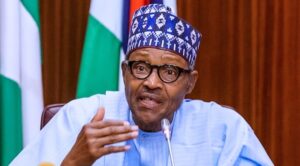

In the absence of CBN intervention in the past six months, Naira has plunged significantly with parallel market premium widened to ₦117, dollar has been exchanged at about ₦480 as against Investors and Exporters Window rate of ₦386.
In a note, Chapel Hill Denham said the CBN appears determined to narrow the spread substantially, given that it has pegged its BDC intervention rate at ₦384 and directed International Money Transfer Operators (IMTOs) to sell FX to Banks and the CBN at ₦382 and ₦383 respectively.
It would be recalled that the CBN further instructed BDCs to sell USD to retail end-users at no more than ₦386.
Read Also:21.76 million Nigerians are Jobless, Bureau of Statistics Says
Explaining the reason why the intervention will not go far, Chapel Hill said firstly, the CBN has halved the volume of sale to BDCs to US$10,000 per BDC.
This includes the fact that the FX auctions will hold twice a week, though as at March 2020, there were 5,300 CBN licenced BDC operators.
Chapel Hill stated that should all the BDCs subscribe for the bi-weekly auctions, the CBN will be selling US$106 million per week, which sum up to US$423 million per month.
“This is substantially lower than the trend level of sale by the CBN to the BDC segment”, analysts stated.
Analysts recalled that CBN’s intervention sale to BDCs in 2019 and Q1-2020 summed up to US$13.6 billion and US$3.6 billion, implying a monthly average of US$1.1 billion and US$1.2 billion respectively.
To sustainably close to parallel market premium, the CBN will likely require a two-pronged strategy of ramping up sales in both the official (I&E Window and Wholesale/Retail FX intervention windows) and the parallel market, similar to the “shock and awe” tactic it employed in 2017.
But, Chapel Hill said the FX liquidity required to repeat such feat and converge all rates at about ₦386 is simply not available at the moment, even after accounting for the anticipated US$1.5 billion World Bank loan.
Adjusting for SWAPs which was US$8.6 billion in March and external holdings of open market operations (OMO) bills of US$10.4 billion in March, Chapel Hill said the organic portion of external reserves is much lower at US$16.7 billion.
Of the sum, the CBN has a substantial backlog of FX demand by manufacturers to clear.
Against this backdrop, Chapel Hill maintains that a substantial currency devaluation is inevitable to unlock liquidity in the FX market, and sustainably eliminate the parallel market premium.
“How far the CBN is willing to go to defend the current de-facto FX peg is uncertain.
“However, based on fundamental valuation using the long run real effective exchange rate, the fair value of the currency is between ₦430 and ₦450, although a bigger devaluation may be required to narrow the imbalances in the current account”, Chapel Hill explained.
Explaining further, analysts stated that Nigeria has had two episodes of export crash in the past two decades.
The firm noted that both episodes required large FX adjustments to rebalance the current account.
“Considering the magnitude of the current export shock, and the pre-existing imbalance in the current account, we believe that the about 5.5% year to date exchange rate devaluation by the CBN is the first leg in several adjustments to come.
“If the past is any indication of the future, we think about 20% – 30% currency adjustment will be needed to structurally rebalance the current account over the next one year.
“The dollar to naira outright forward rate including interest rate differential is priced at ₦470.
“This brings the implied forward rate to ₦435 excluding interest rate differential, which appears to be the more probable path for the I&E window rate”, Chapel Hill Denham explained.
